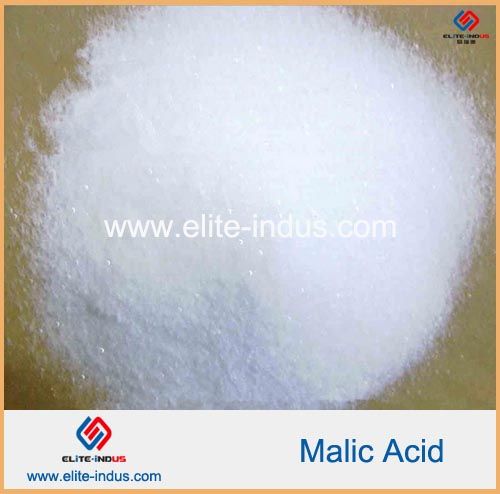Product Specifications
| Prod Model: |
L, DL |
| Markets: |
North America,South America,Eastern Europe,Southeast Asia,Africa,Oceania,Mid East,Eastern Asia,Western Europe |
| Product Content (Based On C4h6o5): |
99.0~100.5% |
| Fumaric Acid Content: |
≤1.00% |
| Maleic Acid Content: |
≤0.05% |
| Heavy Metal (Based On Pb) Content: |
≤10ppm |
| Arsenic (as) Content: |
≤2ppm |
| Ignition Residue: |
≤0.10% |
| Water Insoluble Matters: |
≤0.10% |
| Specific Rotation [α]20: |
0.10~+0.10° |
| Melting Range: |
127~132 Degree |
| Classification: |
Food Additives |
| Appearance: |
Powder |
| Color: |
White |
| Efficacy: |
Promote Nutrition |
| Type: |
Malic Acid |
Product Description
DL-malic acid
Product NameDL-malic acid
Chemical Name2-hydroxy butane diacid
CAS617-48-1
Chemical Molecular StructureC4H6O5
Chemical Structural Formula
Chemical Molecular Weight134.09
Physical PropertiesWhite crystal or crystalline powder with high water absorbability and easily soluble in water and ethanol
Application
Malic acid offers a mouthfeel close to that of natural juice and has natural fragrance. Compared with citric acid, malic acid has higher acidity (20 percent higher), lower quantity of heat, softer taste, higher buffering factor and more lasting time; However, it is not so corrosive as citric acid that leads to series enamel wear, and it is harmless to mouth cavity and teeth. As a new generation of food acidity regulator, malic acid is known as "best food acidity regulator" in biological and nutritional fields. It is widely used in foods such as wines, beverages, fruit juices and chewing gums. It is not only the third food acidity regulator coming after citric acid and lactic acid, but also one of the biggest and most promising organic acids in food industry across the current world.
Malic acid can be added in cool drinks, powder drinks, lactic acid drinks, milk drinks and fruit juice drinks to improve their tastes and flavors. Malic acid is often added together with Aspartame, an artificially synthesized dipeptide sweetener, into soft drinks as the flavor stabilizer. In recent years, malic acid which is more irritating than lactic acid has gradually replaced lactic acid in food industry. Besides a certain amount of pectin and sugar, acid is another key factor in a gel forming process. Malic acid is capable of gelatinating pectin and therefore can be used for making fruitcakes, jelly fruit juice, puree, etc.
Malic acid contains natural skin moisturizing elements. This enables it to dissolve "sticky matters" between dry scale-like dead cells easily, so as to smooth wrinkles on skin and make the skin tender, white, bright, clean and elastic. For this reason, malic acid is very popular for its use in cosmetic formulae
